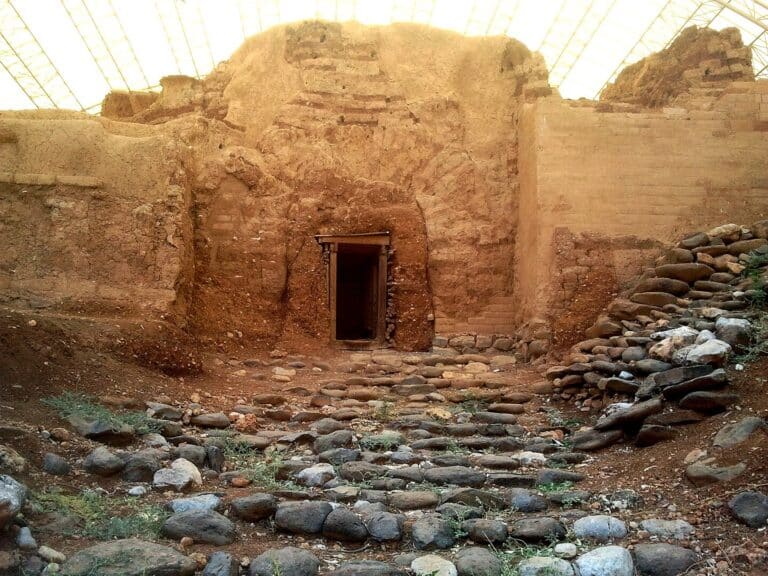Tel Dan Temple Uncovers Centuries-Old Phoenician Artifacts

A recent archaeological discovery in northern Israel has shed light on the ritual practices of the ancient kingdom of Israel. Excavations at a sanctuary site have revealed a unique bathhouse believed to have been used for ritual cleansing by priests. This find, which includes a dressing area and a basin, provides valuable insights into the sacred purification rituals associated with Near Eastern religious practices, particularly those linked to city-based deity worship.
Insights into the Tel Dan Sanctuary
The Tel Dan sanctuary, as reported by Dr. Levana Tsfania-Zias in the journal Levant, features a two-part bathing unit that consists of a yellow-plastered dressing room and a blue-plastered basin. This setup suggests that it was specifically designed for ritual use by the priestly class. Unlike traditional full-immersion baths, the basin’s dimensions indicate that worshippers likely performed their ablutions while standing, using cold spring water sourced from nearby outlets flowing into the Jordan River. This method of cleansing aligns with the practices of sacred purification prevalent in the region.
The sanctuary’s historical significance is further underscored by the discovery of a limestone fragment inscribed in both Greek and Aramaic, which names an obscure deity. This fragment, unearthed in 1976, is believed to have been associated with the central sanctuary of Dan. However, the exact identity of this deity remains elusive, reflecting the complex naming conventions of ancient Near Eastern cultures.
Continuity of Ritual Practices
After the destruction of the original temple by the Seleucids, a new temple was constructed on the same site, preserving the bathing practices. Following a two-century hiatus, the site saw renewed activity during the Middle to Late Roman period. Pilgrims visiting the sanctuary were cleansed in a Fountain House, utilizing primitive clay vessels that were likely discarded after use. This practice resonates with biblical texts that describe the importance of ritual purity in religious observances.
The ongoing excavations at Tel Dan highlight the site’s significance in understanding the religious landscape of ancient Israel. The presence of imported ceramics and multilingual inscriptions suggests that the sanctuary attracted both local worshippers and visitors from afar, indicating its role as a spiritual hub in the region.
Future Excavations and Research Potential
Despite the wealth of information already uncovered, many aspects of the Tel Dan sanctuary remain shrouded in mystery. Scholars, including Dr. Tsfania-Zias, emphasize the importance of further excavations to uncover additional details about the deities worshipped and the rituals performed at this sacred site. The potential for discovering more artifacts and structures could significantly enhance our understanding of ancient religious practices and the cultural dynamics of the time.
Observer Voice is the one stop site for National, International news, Sports, Editor’s Choice, Art/culture contents, Quotes and much more. We also cover historical contents. Historical contents includes World History, Indian History, and what happened today. The website also covers Entertainment across the India and World.

